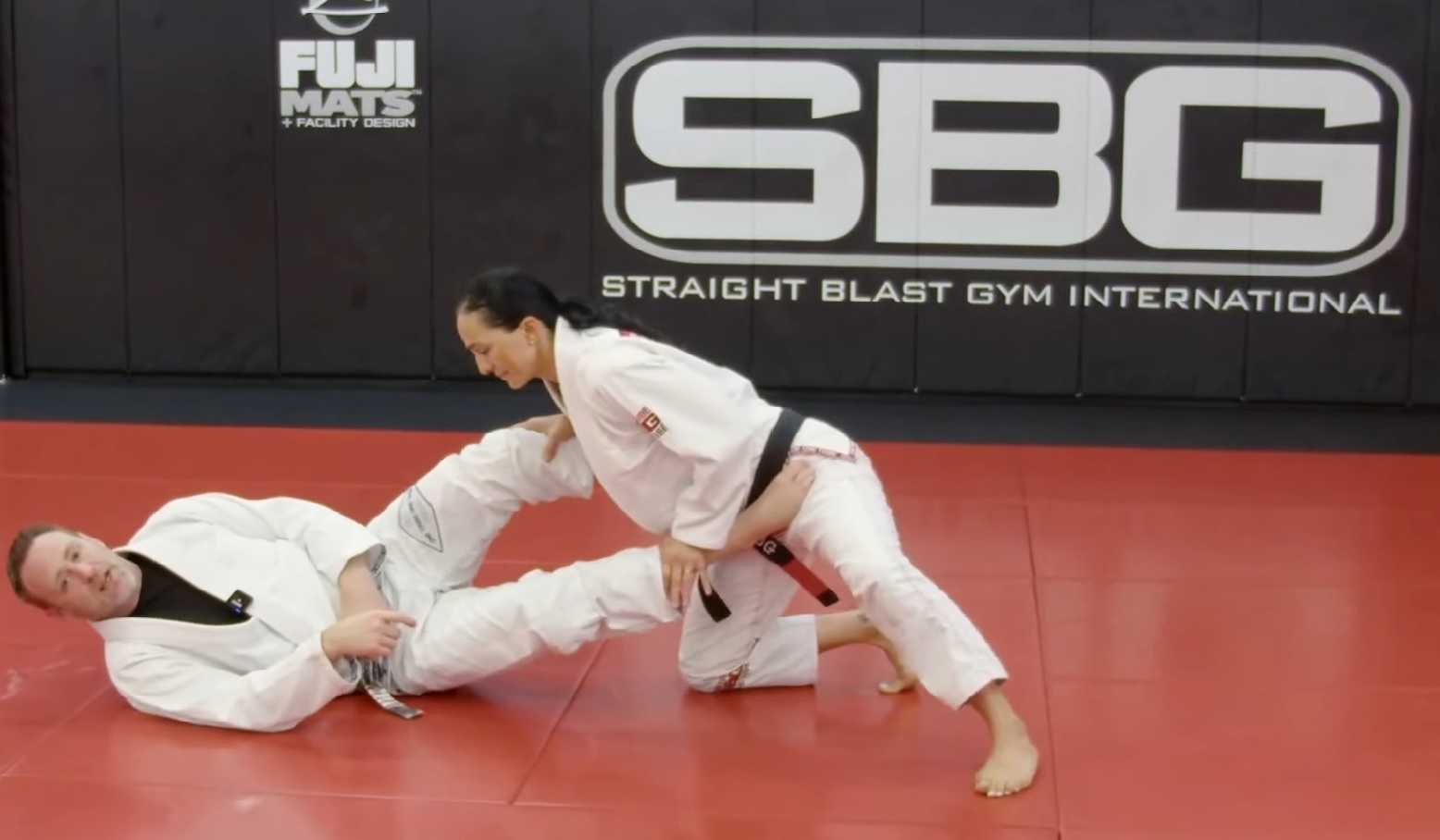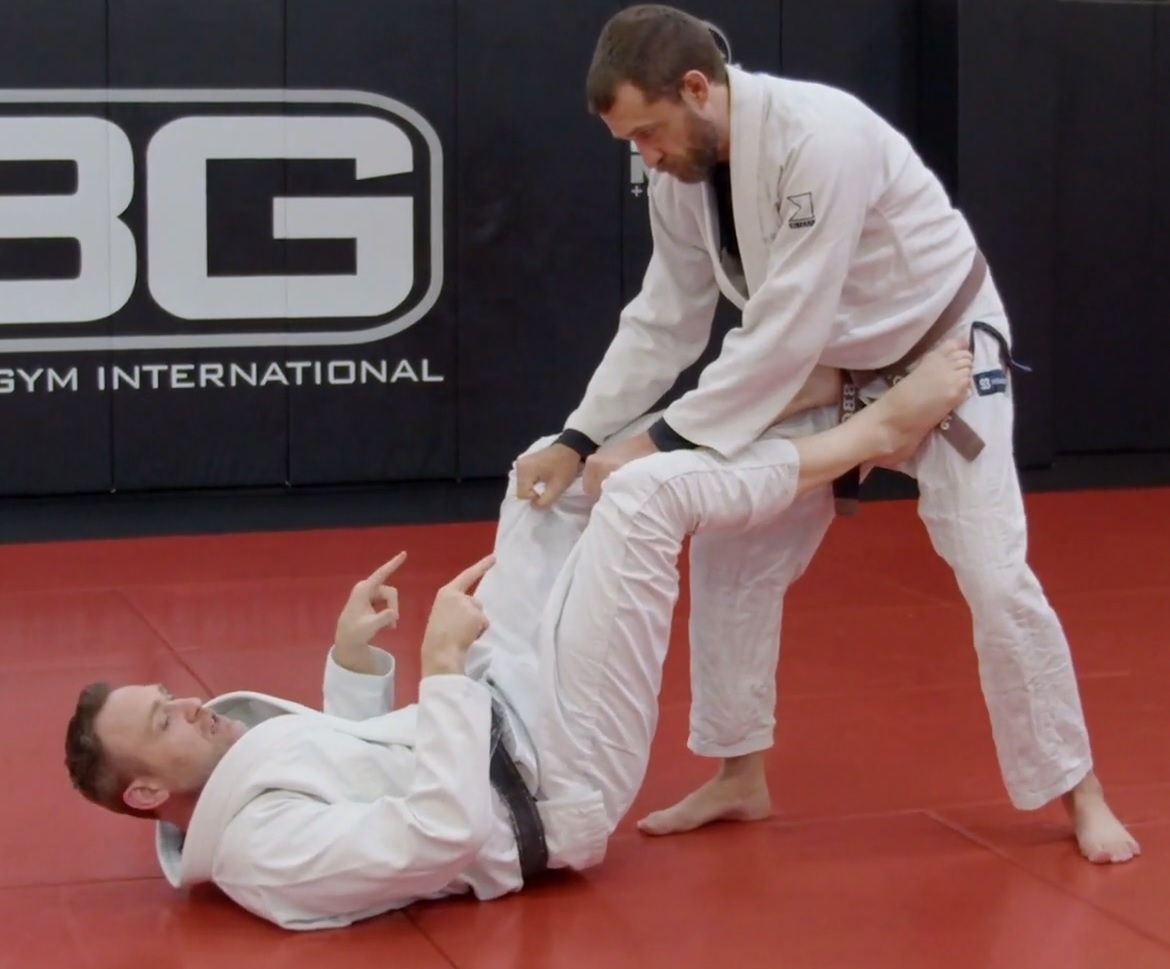Finally, A First Principles Approach To Supercharging Your Open Guard Skills That Works For Every Age and Body Type, Gi or No Gi, Self-Defense or Sport!
Here’s the BLUF (bottom line up front)…
Nearly everyone is thinking about, learning, and teaching the open guard in a suboptimal manner.
This has nothing to do with whether or not their open guard is really good, they have students with great open guards, etc.
The fact is, if a student puts in enough time on the mat, they can become proficient. If they are athletic and coordinated, they’ll typically become proficient relatively quickly.

But that doesn’t mean their paradigm for training and learning this massive part of the game is optimal.
And who’s to say what’s “optimal?”
It all comes down to first principles vs. reasoning by analogy.
The fact is, most BJJ practitioners think of, teach, and learn the open guard primarily by the latter (reasoning by analogy), not the former (first principles)….
Meaning:
-
Through a set of open guard “positions” (spider guard, de la Riva, butterfly, reverse de la Riva, x guard, lasso, collar & sleeve, and so on)
-
Through step-by-step technical sequences (“First get this grip, then move your leg here, then your other hand grabs here…”)
-
By learning and copying the games of your instructor, senior students, or prominent athletes through instructional courses
No doubt, this approach can still work for some, but for most it will take much longer than necessary to develop a high level of skill, which usually means years of unnecessary frustration and injury.
I’ve always been primarily principles focused vs. technique-by-technique focused, but soon after I started 40 Plus BJJ over a decade ago I started to hear back from online students all over the world and realized just how powerful the contrast in approach really was….
I had student after student emailing or messaging me all with similar stories…
“My instructor [famous competitor / instructor X] is amazing but I just can’t do a lot of the techniques they’re teaching. They don’t seem right for how my body moves.”
or
“My instructor is really good at breaking down what he does but your approach really helped me understand ‘how it works’ not just the ‘what to do’ step by step.”
The upshot? These students were getting real results on the mat, much faster and more efficiently than they were before.
And the difference didn’t necessarily have to do with their professor’s skill level (some were world champions) or ability to teach the techniques in a clear, methodical way.
It was all about the approach.

This was all great validation of course, but it also showed me that I had to
dig down even further in that direction….
Ultimately, that led me to evolve from principles and concepts to two zero
on in one the two core mental models that would be most optimal for understanding Jiu-Jitsu at a deep level and translating that understanding
into real skills on the mat:
1) First principles, and 2) systems thinking.
First principles involves stripping away all assumptions, opinion, and conventional wisdom (reasoning by analogy) until we get to the most fundamental, irreducible proposition.
Systems thinking involves the ability to understand the interrelated and interdependent nature of all the component parts that function within a larger system (the macro) as well as the critical details and intricacies of each of the component parts themselves (the micro).
This informed everything I was teaching in my own academy, teaching in seminars, and then ultimately releasing in my instructional courses.
The result? A growing number of students were “getting it,” and in turn I started getting testimonials like these:
Now enter the open guard.
I had already created some open guard courses, but after field testing my approach and getting massive feedback from many BJJ practitioners from white belt all the way to experienced black belt instructors, I knew it was time to go back and share the most potent and universally applicable things I learned.
After all, the open guard is the single most complex area in all of Jiu-Jitsu because there are an almost limitless number of positional variants and offensive possibilities.
But here’s the thing you need to understand: just because it’s complex doesn’t need to be complicated.
Case in point, for many years I’ve been fascinated by several consistent takeaways I’d hear from those who trained with the great Rickson Gracie: his pressure was different than anyone else’s, he was virtually impossible to finish, and…
His guard was unbelievably “simple” but also unbelievably dangerous – and no one could figure out how to pass it when he didn’t want them to. It also barely changed whether he was in a gi, doing no gi submission grappling, or vale tudo (open rules with strikes, i.e. early days of MMA).
During one particular training session years ago with my good friend, Rickson black belt Henry Akins, I had a couple epiphanies about what made Rickson’s concept of connection so effective when it comes to the open guard….
It was just more evidence that when it comes to Jiu-Jitsu, Rickson is all about first principles. (That’s what makes his “basics” so effective, and feel so different).
As a systems thinker, however, I realized that it wasn’t enough to have learned some new details or just add some new tools to my current toolbox….
My job was to extrapolate everything I knew down to first principles, test them in the lab, and see all the common threads until I had a cohesive approach to understanding and learning the open guard as a whole.
In the process of distilling all this down and looking to understand the roots that made all the different types of open guards function at a high level, I encountered a couple other notable instructors with a similar goal.
One in particular I thought was very well executed, but after having coached MMA and self-defense for years I quickly identified one glaring limitation: this “only guard you need” was highly slanted towards sport Jiu-Jitsu. If strikes were ever involved, it was most definitely not the only guard you needed.
Now some of you reading this don’t care about self-defense or MMA, you just love learning and rolling because it’s fun, great exercise, and you enjoy the camaraderie.
Totally cool. But here’s the question I’d like you to ask yourself:
Why Settle?
Why not have one core, high functioning skill set that you know will serve you equally well regardless of whether you’re training in a gi or not, or whether you’re training just with submissions or if someone tried to knock you head off your shoulders?
Because by default, a skill set that could allow anyone to do that – regardless of age, athleticism, or body type – would not only be effective, it would also have to be the most efficient, right?
And because it’s rooted in core, universal principles, it would also allow you to assimilate in any other guard skills that suited your body and personal preferences at a given time in your development… right?
Exactly.
I have students who play pretty much every different flavor of open guard you can imagine, including all the inversions, modern leg lock game, etc.
A guard game rooted in first principles doesn’t exclude those other skills – instead, it’s the perfect, universal “cake” upon which all those other styles and techniques become the delicious, individualized “frosting.”
(I even go into how to layer in your favorite grips and attacks in the later portion of the course.)
And it’s the only game that will serve you in any environment or rule set, and will continue to serve you for as long as you train (which if I have anything to say about it is for life!)
That said, I’m 100% confident that in the next 6 hours, you will discover the first principles-based system (not just technical system) that will fast track your open guard skill development and change the way you look at this game forever.
The course includes my full curriculum as well as the full two day SIX HOUR seminar course. Learn it first hand as well as along side other students.
To your BJJ success,
Coach Stephen
P.S. Here is a review from a student who has experienced this course firsthand:



